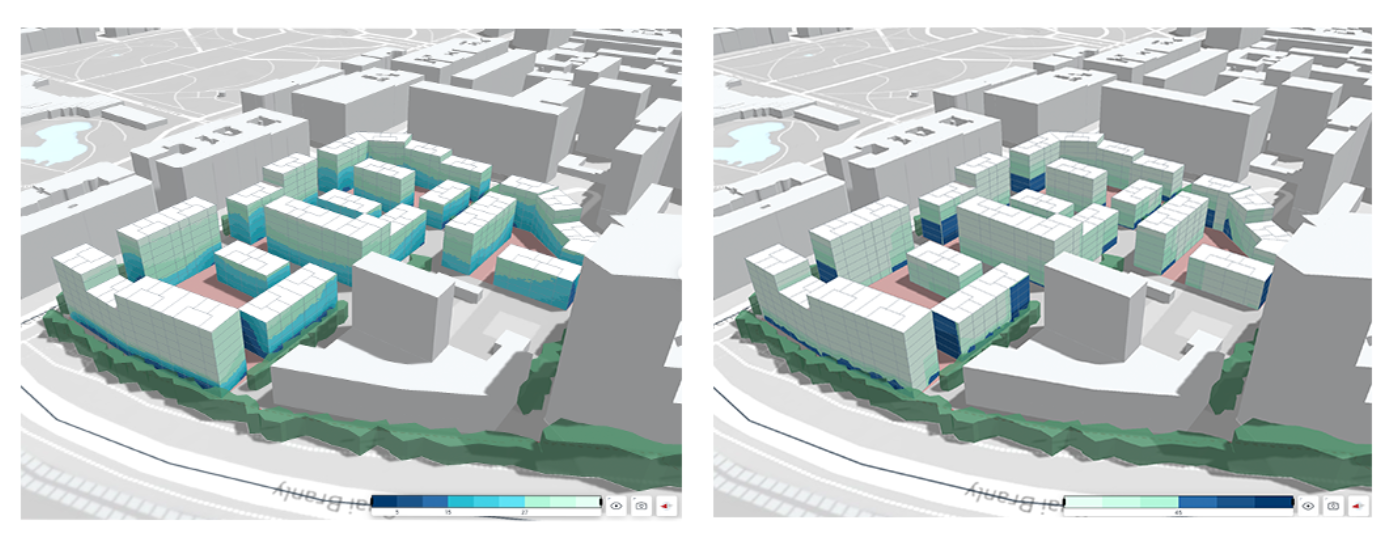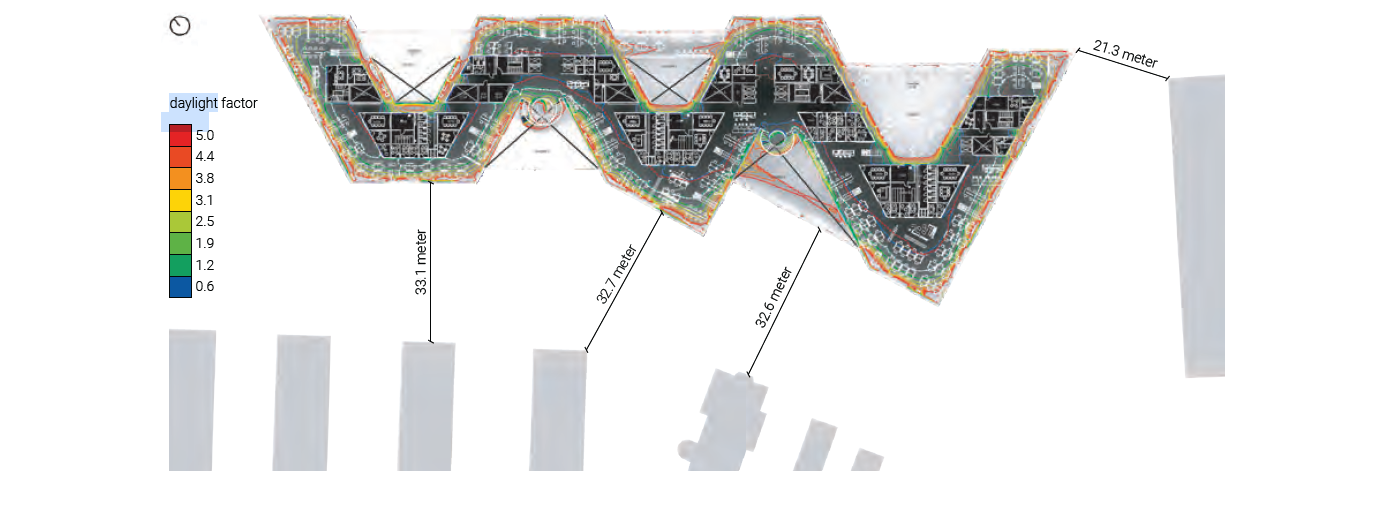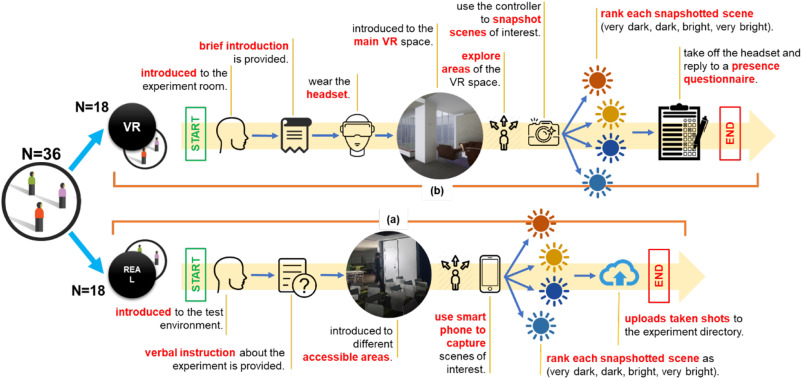
Around 60°N latitude, where several Nordic capitals—including Oslo, Stockholm, and Helsinki—are located, daylight plays a special role in the daily lives of their inhabitants. There is a large seasonal variation in daylight from long summer days up to 19 hours of daylight to long dark winters with less than 6 hours. The opposite occurs in the summer months, where the twilight period can last all night, with it not becoming fully dark around the summer solstice (1). These short cloudy winter days can present a psychological challenge for people living here. In the winter the city goes to work or school in the morning in darkness and returns at the end of the day in darkness. Good daylighting is said to have many benefits to human well-being and from mental health, to productivity benefits, to connections to natural rhythms, but the low light intensity in the winter creates unique challenges for daylight design.
How do we ensure good daylight?
As cities get denser the ability to provide good daylight becomes more challenging. For Nordic cities, low sun angles mean long shadows which create dark and cold environments for the surrounding outdoor spaces. These cities are characterised by apartment living and relatively uniform perimeter blocks which are dense and low with an average of about 5-8 stories. These conditions make it particularly difficult in meeting daylight on lower floors, and housing on the ground floor is often a challenge. Low sun angles also mean that sun penetrates deep into buildings during the winter causing glare, forcing occupants to use shades and electric lighting.

Ensuring good daylight starts at the city scale. Low sun angles, urban daylighting is an important parameter to consider early in order to provide well daylight streets, public spaces and urban blocks. These decisions impact daylight performance more than facade design and material choice of buildings as they have a lasting effect on the built environment, beyond the life of a building (2). It’s important to think of daylight in scales, from urban geometry to building volumes and down to the window dimensions and facade materials. Facade design is not only about allowing daylight into the building, but facade materials can also reflect light and impact the ambient light of outdoor areas.
How is daylight evaluated?
Early stage daylight design
Predicting daylight in architecture relies on many variables, including surrounding context, buildings orientation, facade design with window dimensions, as well as room size and depth. But in the early design stages, methods can be used to give an impression of daylight performance. In Norway, for example, daylight is evaluated in early design stages with an obstruction angle method. This method measures the sky view access from a facade with a 45 degree line from nearby buildings and terrain obstacles to the buildings facade that is to be evaluated. Areas on the facade above this obstruction angle are thought to have enough daylight, while those regions below it should have their daylight potential further evaluated (3). Another method for this early stage is the Vertical Sky Component (VSC). This method determines how much overcast sky is visible from a point on a building’s façade or the centre point of a window (4). Both the obstruction angle and VSC can be tested on simple volumetric models.

One such tool is web-based application Spacemaker, which provides an early indication of the effect which the configuration and orientation of the building volume has on daylight. The results are represented graphically on the 3D model and provided as a percentage in four ranges; anything above 27% is considered satisfactory, while anything between 27% and 15% demands some design modifications, such as enlarging windows and changing how rooms are organised to maximise access to daylight. It is quite difficult to obtain between 15% and 5%, and it is impossible below 5% (4). These results only provide an indication of performance and more complex facade geometry, such as balconies are not taken into account.
As an architectural project moves from planning stage to building design, once facades have been sketched and spatial programming has been assigned, then daylight can be assessed with Daylight Factor (DF). DF is a static daylight metric, defined as “the ratio of the internal illuminance at a point in a building to the unshaded, external horizontal illuminance under a CIE overcast sky” (5). The Norwegian building regulations require DF calculations to demonstrate compliance in buildings, especially for areas such as workspaces and in the common spaces of housing projects (3). DF does not take into account the project’s specific geographical location. So although this gives an impression of available daylight, it does not represent the whole reality of daylight performance in the real world context.

How can daylight be a design driver?
Use Dynamic Daylight Metrics
The seasonal variety of daylight availability in the Nordics result in DF not being a sufficient evaluation tool for a comprehensive understanding of daylight performance. An alternative to DF is Climate-based Daylight Modeling such as Daylight Autonomy (DA) which considers both geographic location and specific weather data to provide a percent of annual daytime hours a given point in a space is above a specified illumination level (6).
These calculations can be complex and require specialised skills, but tools such as Ladybug allow these analyses to be integrated into an architect’s design workflows, here daylight factor can be evaluated alongside daylight autonomy and other climate-based daylight analyses to get a more holistic impression of daylight performance. Other open source tools have become available that make these calculations more accessible, such as Andrew Marsh’s “Daylight-box” web-app. This app allows users to upload weather files and conduct a variety of climate-based daylight metrics for interior spaces in seconds. Room and window configurations can also be modified to test various conditions (7).

Test Solar Envelopes
Solar envelopes is a concept where through solar analysis, a volume is generated with least impact on the daylight accessibility of the surroundings. This concept was developed by Ralph L. Knowles, who looked at how daylight and solar access could be a design driver for building form in urban planning. These solar envelopes expose the maximum development potential of a site, whilst ensuring solar accessibility for neighbouring buildings, streets and public spaces (8).
Adapting building volumes to increase solar access is a method that is already intuitively used by many architects in the Nordic countries, but the solar envelope concept gives designers a climatic data-informed starting point to begin design. These envelopes can be generated with parametric tools such as Grasshopper for Rhino. One such plug-in for Grasshopper called Solar Toolbox allows users to generate solar envelopes using this methodology (9).

Use our senses
Recently we have started to see experiments using virtual reality (VR) to see if we can get a better understanding of dynamics of daylight in indoor environments. One such experiment simulated a day lit environment with a game engine and had a subject report on brightness perceptions in the physical environment and its virtual replica. They found a strong consistency between perceptions in the virtual and real environments (10). In the future, VR technology could very well be used to supplement daylight simulations in both indoor and outdoor situations.

Daylight simulations can only give indications of daylight performance. For designers, there is still value in developing our senses to daylight in the real world. In the Nordic context, experiencing first hand how the low light feels, how it reacts with materials and what atmosphere it creates helps develop one’s understanding and design intuition. This can be developed further by testing spaces with a handheld light metre to measure and evaluate the quality of light in interior spaces.
For daylighting to be a design driver, it should be thought of as the primary light source in the design, and be set as a design goal from the earliest stage. Daylight should be designed at scales, working from the urban scale, to building orientation and form, to building envelope and interior spaces. Dynamic daylight metrics should be utilised to evaluate design decisions, although it is important to remember that daylighting is just one of many design parameters in environmentally performative architecture and should be seen together with other performance criteria to ensure a more holistic design solution.
References //
(1) Matusiak, B. S. (2012). Nordic daylight. Nordic Light and Colour, 25-38.,
(2) Kongebro, Signe (2012), Daylight in the City, Design with Knowledge, 101-103, https://issuu.com/henninglarsenarchitects/docs/design_with_knowledge_08112012, Retrieved 20.12.2022
(3) Direktoratet for Byggkvalitet (2022), Section 13-7. Light, Building technical regulations (TEK17), https://dibk.no/regelverk/byggteknisk-forskrift-tek17/13/v/13-7/, Retrieved 20.12.2022
(4) Storey, Ben (2020) Daylight analysis in the design process https://blogs.autodesk.com/spacemaker/2020/10/02/daylight-analysis-in-the-design-process/ Retrieved 20.12.2022
(5) Moon P, Spencer DE. (1942). Illumination forms a non-uniform sky. Illum. Eng. (N.Y.). 37:707– 726
(6) The Daylighting Pattern guide (2021), Daylight factor https://patternguide.advancedbuildings.net/using-this-guide/analysis-methods/daylight-factor.html Retrieved 20.12.2022
(7) Marsh, Andrew (2022), Dynamic daylighting, http://andrewmarsh.com/software/daylight-box-web/, Retrieved 20.12.2022
(8) Knowles, R. L. (2003). The solar envelope: its meaning for energy and buildings. Energy and buildings, 35(1), 15-25.
(9) Abel Sepulveda Luque and Francesco De Luca (2022) Solar Toolbox plug-in for Grasshopper, https://www.food4rhino.com/en/app/solar-toolbox Retrieved 20.12.2022
(10) Hegazy, M., Ichiriyama, K., Yasufuku, K., & Abe, H. (2021). Comparing daylight brightness perception in real and immersive virtual environments using perceptual light maps. Automation in Construction, 131, 103898.
Image credits //
(Fig 1) Flickr, image by Jarle Naustvik, retrieved 20.12.2022
(Fig 2) Kongebro, Signe (2012), Daylight in the City, Design with Knowledge, 101-103, Retrieved 20.12.2022
(Fig 3) Storney, Ben (2020) Daylight analysis in the design process, Retrieved 20.12.2022
(Fig 4) Naboni, E., & Havinga, L. (2019). Regenerative design in digital practice: A handbook for the built environment. Tools for holistic modeling, 65
(Fig 5) Marsh, Andrew (2022), Dynamic daylighting, Retrieved 20.12.2022
(Fig 6) Abel Sepulveda Luque and Francesco De Luca (2022) Solar Toolbox plug-in for Grasshopper, Retrieved 20.12.2022
(Fig 7) Hegazy, M., Ichiriyama, K., Yasufuku, K., & Abe, H. (2021). Comparing daylight brightness perception in real and immersive virtual environments using perceptual light maps. Automation in Construction, 131, 103898.

